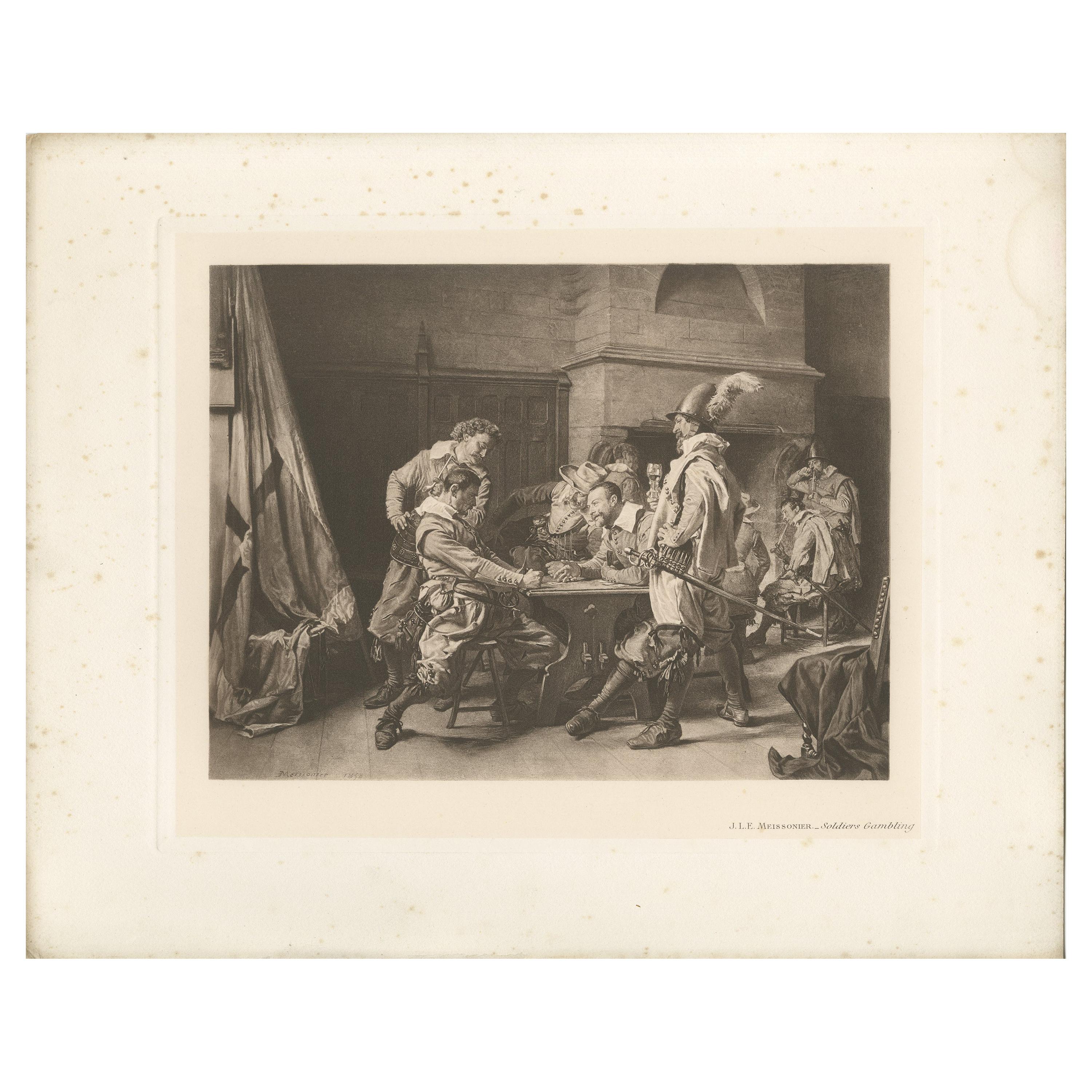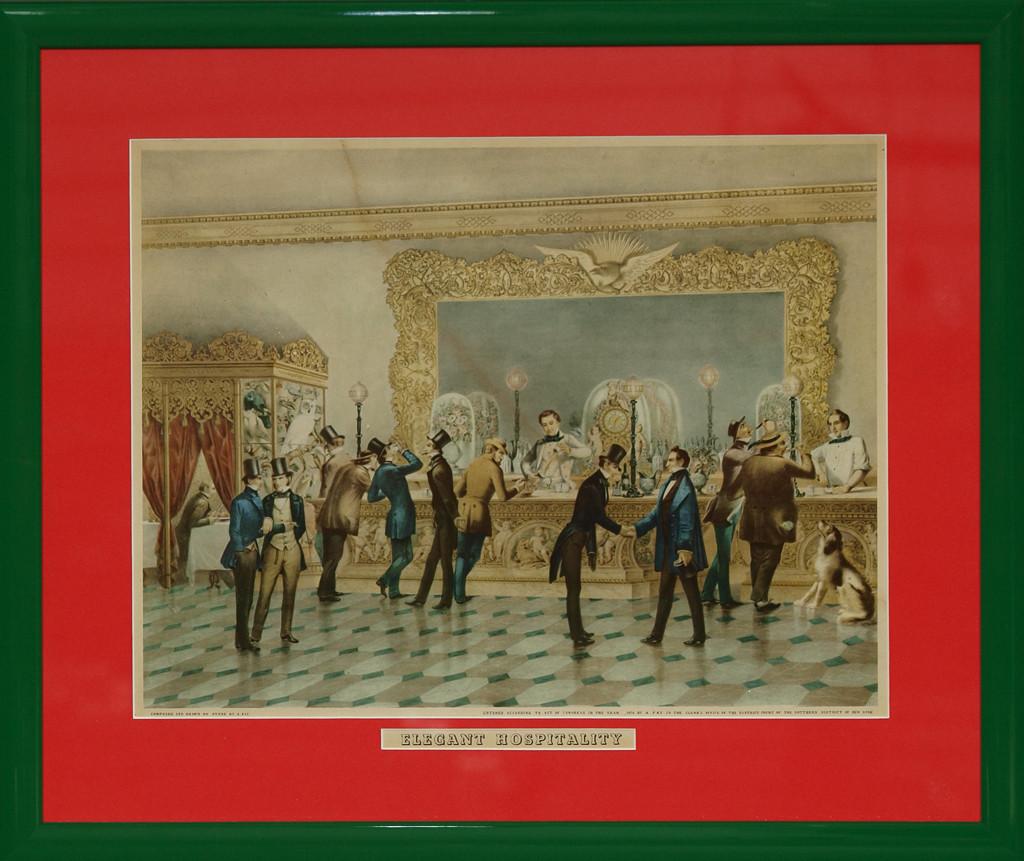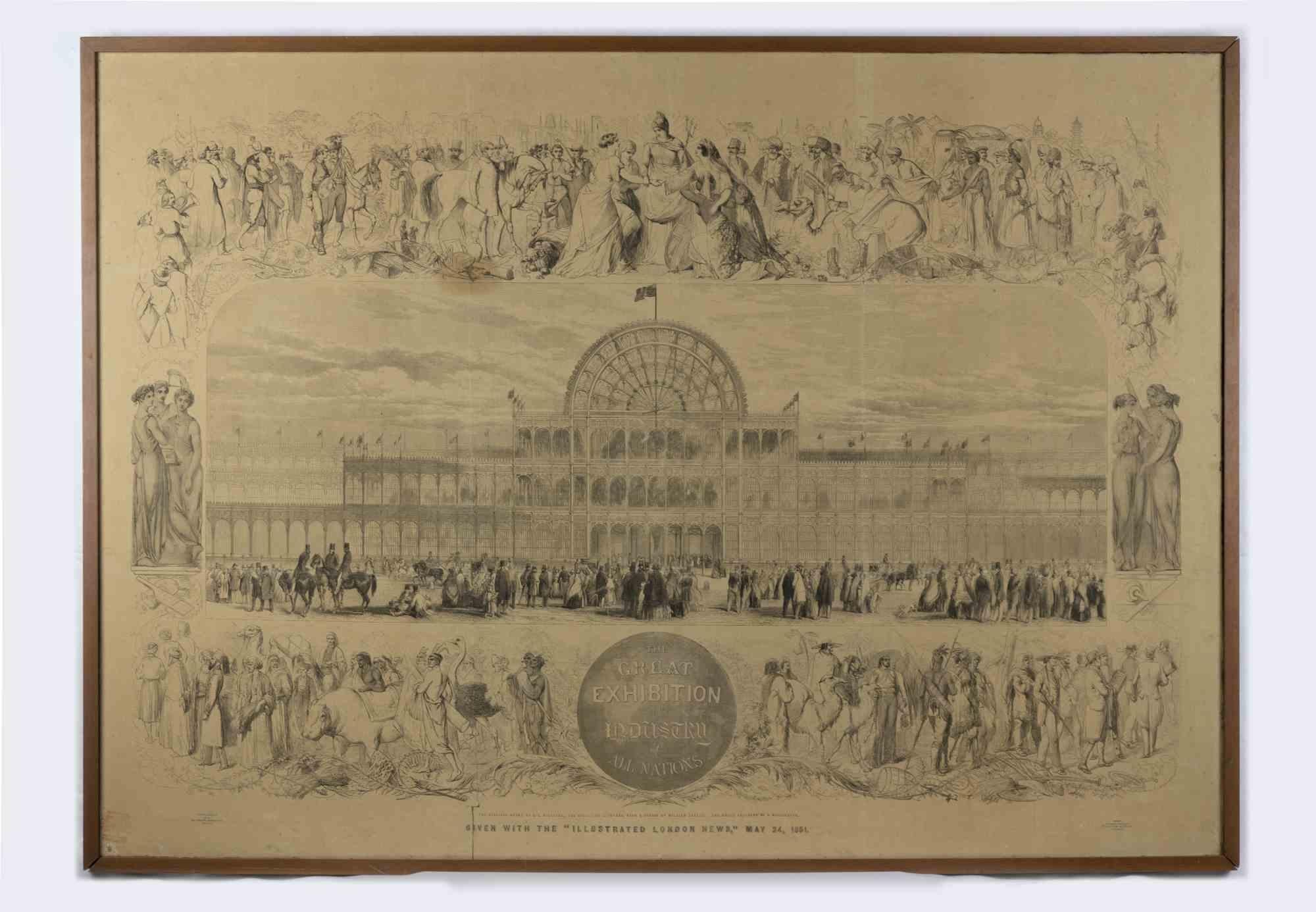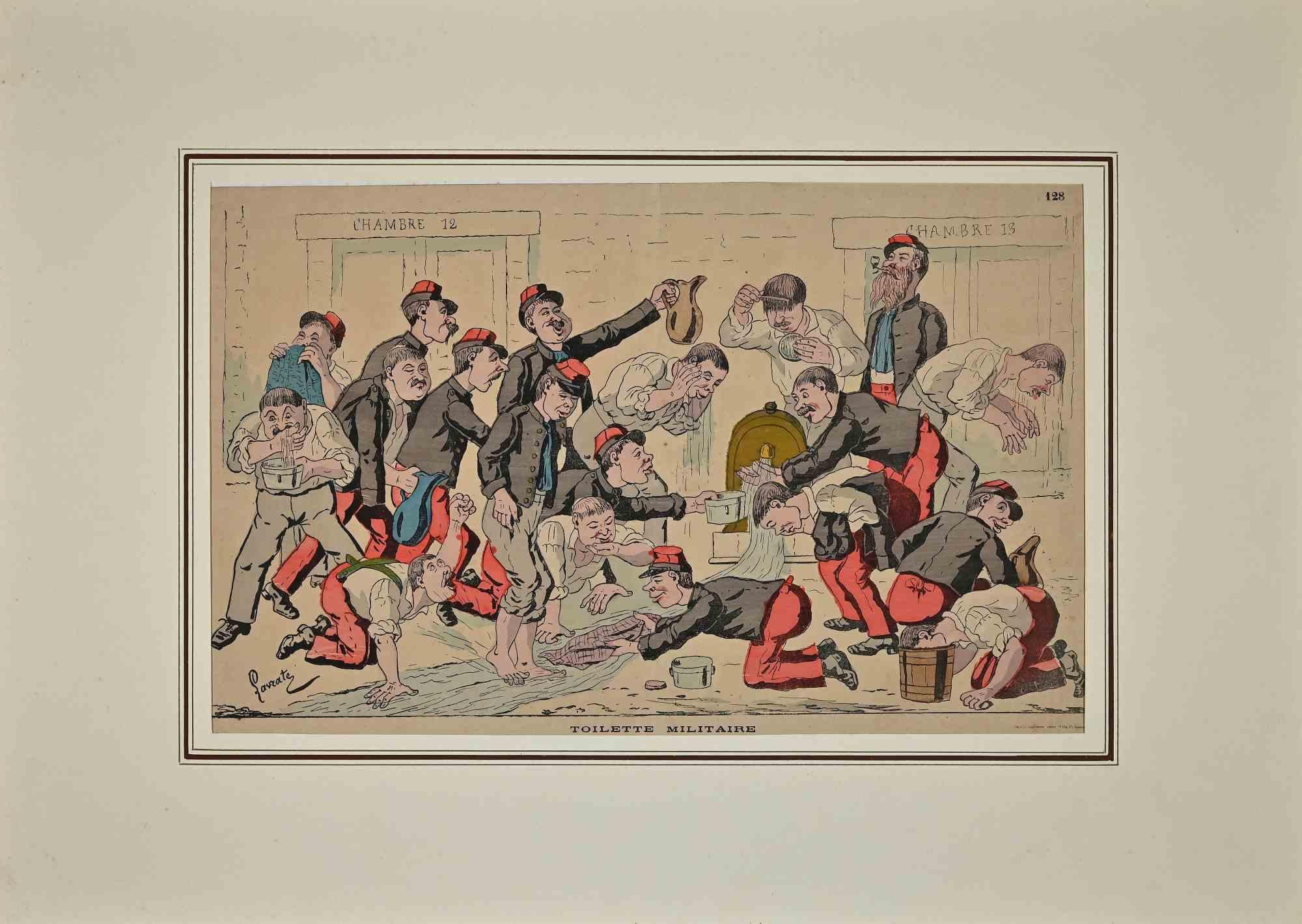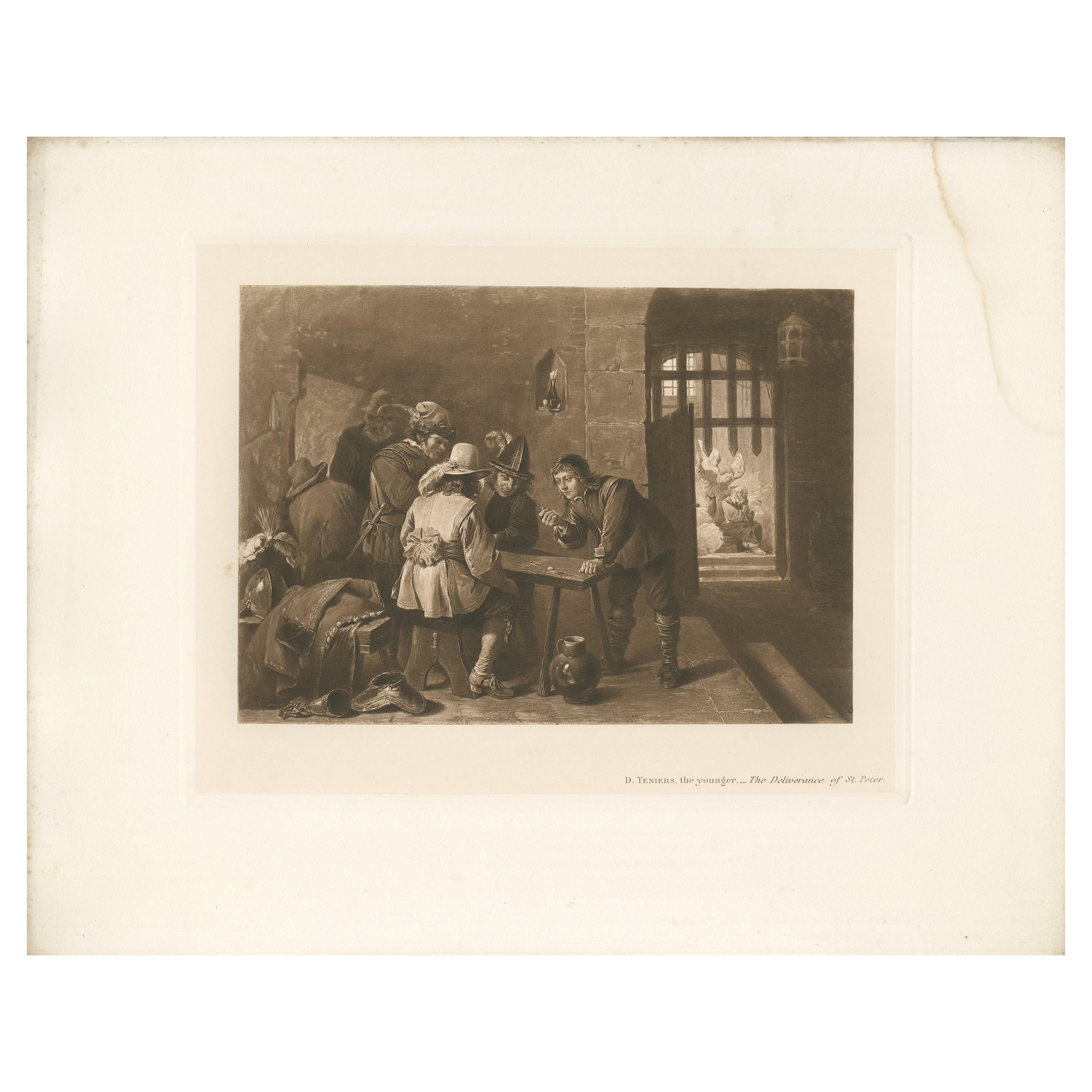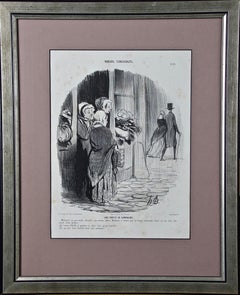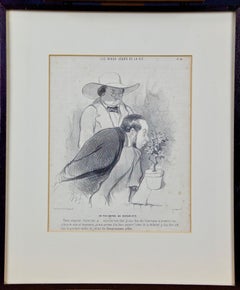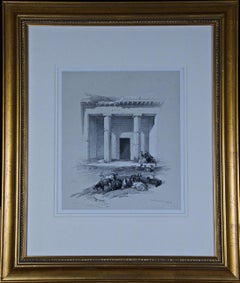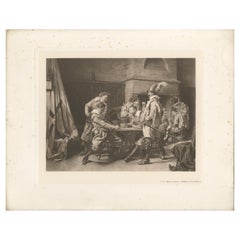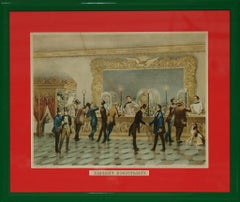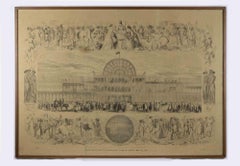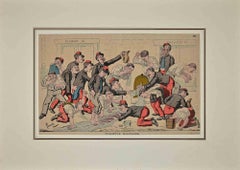Items Similar to "Inspection Tour in the Wine Vaults", 1876 Philadelphia Centennial Exposition
Want more images or videos?
Request additional images or videos from the seller
1 of 8
Unknown"Inspection Tour in the Wine Vaults", 1876 Philadelphia Centennial Exposition1876
1876
$475
£363.97
€418.65
CA$679.08
A$737.60
CHF 390.50
MX$8,906.08
NOK 4,874.97
SEK 4,618.26
DKK 3,126.03
About the Item
This engraving is entitled "Philadelphia, PA- The Centennial Exposition - the Jury of Award on an Inspection Tour in the Wine Vaults of Agricultural Hall", published in New York in Frank Leslie's Illustrated Newspaper, No. 1,093, Vol. XLIII, September 9, 1876. It depicts men examining wine for the purpose judging a wine competition at the 1876 Centennial Exposition in Philadelphia. The jurors are inspecting wine bottles, color and smell, as well as tasting the wine, while they discuss the wine's characteristics and merits.
The print was previously owned by the Sterling Vineyard Winery Art Collection, Calistoga, California and was displayed at the winery. The print is presented in a custom bleached birch wood frame with an off-white mat. The frame measures 21.88" x 15.88" x 1.25". The print is in excellent condition.
- Creation Year:1876
- Dimensions:Height: 21.88 in (55.58 cm)Width: 15.88 in (40.34 cm)Depth: 1.25 in (3.18 cm)
- Medium:
- Movement & Style:
- Period:
- Condition:
- Gallery Location:Alamo, CA
- Reference Number:Seller: # 34921stDibs: LU117326015802
About the Seller
5.0
Platinum Seller
Premium sellers with a 4.7+ rating and 24-hour response times
Established in 2011
1stDibs seller since 2019
293 sales on 1stDibs
Typical response time: 1 hour
- ShippingRetrieving quote...Shipping from: Alamo, CA
- Return Policy
Authenticity Guarantee
In the unlikely event there’s an issue with an item’s authenticity, contact us within 1 year for a full refund. DetailsMoney-Back Guarantee
If your item is not as described, is damaged in transit, or does not arrive, contact us within 7 days for a full refund. Details24-Hour Cancellation
You have a 24-hour grace period in which to reconsider your purchase, with no questions asked.Vetted Professional Sellers
Our world-class sellers must adhere to strict standards for service and quality, maintaining the integrity of our listings.Price-Match Guarantee
If you find that a seller listed the same item for a lower price elsewhere, we’ll match it.Trusted Global Delivery
Our best-in-class carrier network provides specialized shipping options worldwide, including custom delivery.More From This Seller
View AllDaumier Satirical Lithograph Depicting French Men Tasting and Critiquing Wine
By Honoré Daumier
Located in Alamo, CA
Daumier was a master of French satire and caricatures. In this lithograph entitled "TYPES PARISIENS NO. 1, Eh bien malin! comment le trouvez vous celui-là! - Oui, oui, mais enfin - O...
Category
1840s Other Art Style Interior Prints
Materials
Lithograph
"Une Partie de Campagne": 19th Century Honore Daumier Caricature
By Honoré Daumier
Located in Alamo, CA
This is a 19th century Honore Daumier lithographic caricature/satire entitled "Une Partie de Campagne" (Part of the Campaign), plate 59 from the ser...
Category
Mid-19th Century Other Art Style Landscape Prints
Materials
Lithograph
19th Century Daumier Satirical Lithograph "Triumph of the Botanist"
By Honoré Daumier
Located in Alamo, CA
A satirical lithograph by Honoré Daumier (1808-1879) entitled "Un Triomphe de Botaniste" (Triumph of the Botanist), which depicts a proud and nervous botanist in glasses and a wide brimmed hat awaiting the critique of a snobby critic, who is smelling his blooming flowers. The French text beneath the image roughly translates: "Here, sir, sniff me that ... here is a rose of which I am proud, it blooms for the first time .... and by dint of patience, I managed to make it acquire the smell of rhubarb! .. I must be quoted in the next Journal of Useful Knowledge" or "Look at this, sir, go ahead, smell it ... I am proud of this particularly pink flower ... it's flourishing for the first time ... with patience, and care I was able to give it an odor of rhubarb! .. . Surely I should be mentioned in the next edition of the Journal of Useful knowledge". The lithograph was published in the famous and very popular French satirical...
Category
1840s Interior Prints
Materials
Lithograph
David Roberts' Entrance to the Caves: A 19th Century Hand-colored Lithograph
By David Roberts
Located in Alamo, CA
"Entrance To The Caves Of Beni Hasan" is a 19th century half-folio sized tinted duo-tone lithograph from the "The Holy Land, Syria, Idumea, Arabia, Egypt and Nubia" volume of David R...
Category
1840s Realist Landscape Prints
Materials
Lithograph
A Rare 19th Century Honore Daumier Caricature from the "Types Parisiens" Series
By Honoré Daumier
Located in Alamo, CA
This is a rare 19th century satirical lithograph by Honoré-Victorin Daumier entitled "Types Parisiens, L'InstItuteur: Votre fils me fera honneur!....c'est un joli sujet!!!", No. 24 (Parisian Types, The Institutor: Your son will be my honor! ... it's a nice subject !!), published in Paris in the satirical magazine La Caricature, May 24, 1840 by Aubert et Cie. It depicts a man presenting his son to another man, presumably a teacher or school headmaster, who politely states that it would be an honor to take care of such a nice boy, as he watches the boy picking his nose. An apparent teaching poster or map hangs on the wall in the background.
This rare Daumier lithograph...
Category
Mid-19th Century Other Art Style Interior Prints
Materials
Lithograph
Church of the Holy Sepulchre: A 19th C. Hand-colored Lithograph by David Roberts
By David Roberts
Located in Alamo, CA
"Stone of Unction, Church of the Holy Sepulchre" is a framed 19th century hand-colored lithograph by David Roberts from the large folio edition of his monumental 6 volume publication...
Category
1840s Realist Landscape Prints
Materials
Lithograph
You May Also Like
Antique Print of 'Soldiers Gambling' made after J.L.E. Meissonier (1902)
Located in Langweer, NL
Antique print titled 'Soldiers Gambling'. Original antique print on chine collé made after a painting by J.L.E. Meissonier. This print originates from volume 3 of the series 'The Wal...
Category
Early 20th Century Prints
Materials
Paper
$165 Sale Price
20% Off
"Elegant Hospitality" Bar At Gentlemen's Private Club c1854 Print
Located in Bristol, CT
Print Sz: 11 1/2"H x 15"W
Frame Sz: 17 1/4"H x 20 1/2"W
Composed and drawn on stone by A. Fay
Stylish gentlemen's private club interior scene featuring a grand bar
c.1854
Category
1850s Prints and Multiples
Materials
Lithograph
The Great Exhibition - Lithograph by J. L. Williams - 1851
Located in Roma, IT
The Great Exhibition of the Industry of all Nations is an original old master artwork realized in 1851.
Black and white lithograph by J L Williams; th...
Category
1850s Modern Figurative Prints
Materials
Lithograph
Toilette Militaire - Lithograph - 1880s
Located in Roma, IT
Toilette militaire is an original modern artwork realized in the 1880s.
Original colored lithograph on paper.
Sheet dimensions: 70 x 50 cm.
Passepartout is included.
Mint condit...
Category
1880s Modern Figurative Prints
Materials
Lithograph
Antique Print of 'The Deliverance of St. Peter' made after D. Teniers (1902)
Located in Langweer, NL
Antique print titled 'The Deliverance of St. Peter'.
Original antique print on chine collé made after a painting by D. Teniers, the younger.
This print originates from volume 3 o...
Category
Early 20th Century Prints
Materials
Paper
$165 Sale Price
20% Off
G. Paterson "Dinner Party at a Mandarin's House" Engraving After T. Allom c.1840
Located in San Francisco, CA
G. Paterson "Dinner Party at a Mandarin's House" Original Engraving After T. Allom C.1840
Original engraving
Dimensions 8" wide x 5" high
The frame measures 20.5" wide x 18.5" hig...
Category
Mid-19th Century Realist Interior Prints
Materials
Engraving
